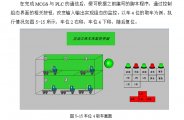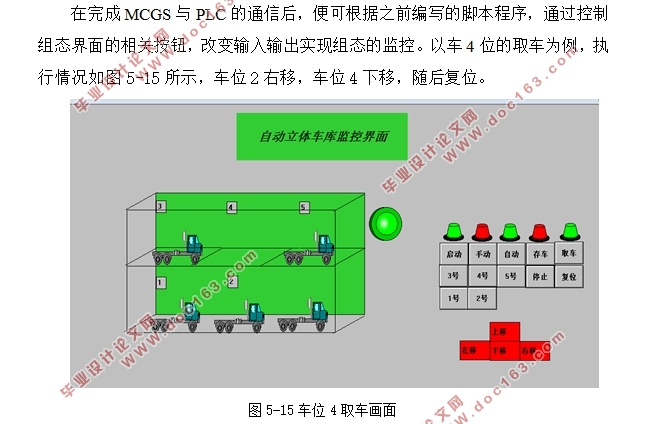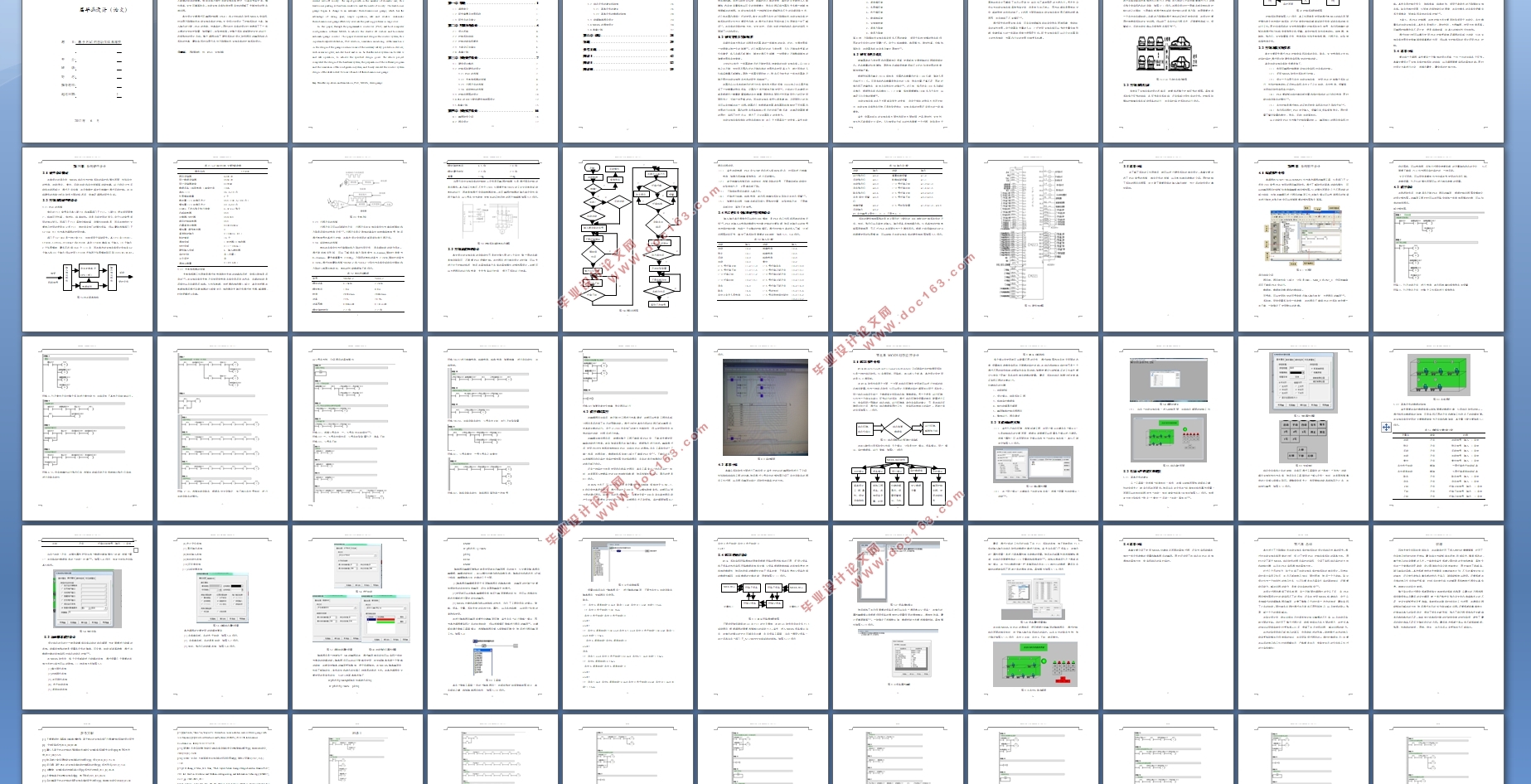基于PLC的自动立体车库控制系统设计

基于PLC的自动立体车库控制系统设计(任务书,开题报告,外文翻译,论文13000字)
摘要
近年来国内经济快速发展,中国已经成为世界第一大经济体,居民生活由以前的解决温饱到现在的小康社会。国内汽车的数量快速增长,传统的停车场已经不能满足社会的需要。传统车库开始往自动立体车库转变,它具有节省空间、操作简单、安全可靠等特点。自动立体车库快速发展有效的缓解了大城市中的停车难问题。
本文设计主要通过可编程控制器(PLC)和上位机组态软件MCGS来实现对双层升降横移式自动立体车库的控制。文中探讨并设计了控制系统的方案、输入输出的分配、PLC的选型、仿真监控。同时在对车库的设计时考虑到了了一些必要的安全防护装置,如报警灯、防坠挂钩等。使整个系统能都稳定安全的运行,达到指定的设计目标。整个课题完成了硬件系统的设计,软件程序的编写和组态系统的仿真,最终实现对双层五车位升降横移式立体车库的控制系统设计。
关键词: 升降横移式 PLC MCGS 立体车库
Design of automatic stereo garage control system based on PLC
Abstract
For years, the rapid development of domestic economy, China has become the world's largest economy, the lives of residents from the previous solution to the current well-off society. The rapid growth in the number of domestic cars, the traditional parking lot has been unable to meet the needs of society. The traditional garage began to change to an automatic three-dimensional garage, which has the advantage of saving space, simple operation, safe and reliable. Automatic three-dimensional garage effectively alleviate the parking problems in large cities.
[资料来源:Doc163.com]
In this paper, through the programmable controller (PLC) and host computer configuration software MCGS to achieve the double lift vertical and horizontal automatic garage control. This paper discusses and designs the control system, the input and output distribution, PLC selection, simulation monitoring. At the same time in the design of the garage contains some of the necessary safety protection devices, such as alarm lights, anti-fall hook and so on. So that the entire system can be stable and safe operation, to achieve the specified design goals. The whole project completed the design of the hardware system, the preparation of the software program and the simulation of the configuration system, and finally realized the control system design of the double-deck five-car lift-and-lift three-dimensional garage.
Key Words: up-down and translation; PLC; MCGS; stereo garage
[资料来源:http://doc163.com]



目录
摘要 I
Abstract II
第一章 绪论 1
1.1 课题简介 1
1.2 研究背景及发展现状 1
1.3 研究目的及意义 2
第二章 控制系统设计 4
2.1 设计思路 4 [资料来源:www.doc163.com]
2.2 控制系统组成 4
2.2 控制功能实现要求 5
2.3 方案论证与确认 6
2.4 本章小结 6
第三章 系统硬件设计 7
3.1 硬件设计概述 7
3.2 控制系统硬件的设计 7
3.2.1 PLC的选择 7
3.2.2 光电传感器的选择 8
3.2.3 行程开关的选择 9
3.3.4 驱动电机的选择 9
3.3 控制流程图的设计 10
3.4 PLC的I/O分配和硬件接线图设计 12
3.5本章小结 15
第四章 系统软件设计 16
4.1 编程软件介绍 16
4.2 程序设计 17
4.2 程序调试监控 22
4.3 本章小结 23
第五章 MCGS组态监控设计 24
5.1 MCGS软件介绍 24
5.2 工程画面的实现 25
5.2 组态元件的建立和链接 26 [资料来源:http://www.doc163.com]
5.2.1 基本元件的建立 26
5.2.2 基本元件的数据的链接 28
5.3 动画脚本程序设计 29
5.4 MCGS的通信设计 34
5.4本章小结 37
第六章 总结 38
致谢 39
参考文献 40
附录Ⅰ 42
附录Ⅱ 52
附录Ⅲ 59 [资料来源:www.doc163.com]
上一篇:基于PLC的镀膜机控制系统设计(附PLC电路图,程序)
